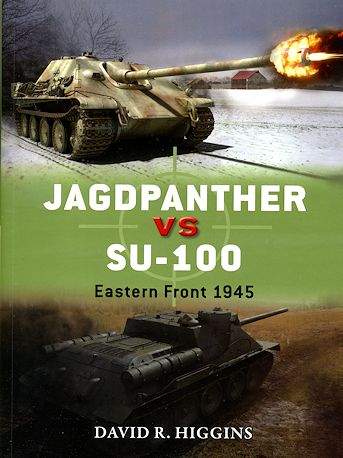 This latest
addition to Osprey's Duel series has two antagonists that are quite close to
each other in the way they are designed, but not in the way they were used.
This latest
addition to Osprey's Duel series has two antagonists that are quite close to
each other in the way they are designed, but not in the way they were used. |
Author: |
David R. Higgins |
|
Publisher/Distributor |
Osprey Publishing |
|
Price |
$18.95 MSRP |
|
Reviewer: |
|
| Notes: |
80 pages, 7¼ x 9¼ inches, softcover ISBN: 978-1-78200-295-6 |
 This latest
addition to Osprey's Duel series has two antagonists that are quite close to
each other in the way they are designed, but not in the way they were used.
This latest
addition to Osprey's Duel series has two antagonists that are quite close to
each other in the way they are designed, but not in the way they were used.
I guess you can credit the Germans with coming up with the idea of an assault gun. The original thought behind it was to have an armored vehicle which would be used to accompany infantry and be used to help them take out various fortifications. As such, the guns were designed to use HE rounds, which are more useful for destroying fixed installations than those developed for use against tanks.
Where the Germans deviated was when they realized that by arming their vehicles with guns and ammunition that was effective against enemy tanks, these vehicles could be used in ambush and then quickly move to some other locale to repeat the process. They would also have a secondary task of infantry support when required. This anti-tank role was the primary purpose of the Jagdpanther.
The Soviets, on the other hand, were rather late in getting into the assault gun business and it wasn't until their war with the Germans was well underway that they decided to build similar weapons, mostly based on the T-34 chassis. Throughout the Soviet use of vehicles like the SU-85, SU-100 and SU-152, their primary task was infantry support. As such, the Soviets never truly developed tactics that would allow them to be used in the anti-tank mode.
Both the Jagdpanther and the SU-100 are very late war developments and it was only in the last months of the war that the two vehicles met each other in combat.
This edition by David Higgins covers the development and deployment of both of these weapons as well as looks at what came before. For the Soviets, it was the need to provide larger and larger guns. For the Germans, it was also about the gun, but also making the vehicle one that could survive. Unfortunately for the Germans, when the Jagdpanther broke down or ran out of fuel, it was frequently unrecoverable. This was due to a lack of spares as well as the lack of fuel and inability to get what was a rather heavy vehicle out of situations where it was bogged down or damaged in combat. Both vehicle types had issues with the transmission as these were quite front heavy, the SU-100 even more so than its German counterpart.
The book covers one major battle in Hungary, often considered to be the last German offensive of the war in March of 1945 and shows how the two types fared. Truthfully, the Germans did the best with what they had, but the war had gotten to the point where even winning battles meant little in the outcome of the conflict.
Chock full of excellent period photos, diagrams and art work, it makes for a great read. I learned quite a bit from this volume and so can quite easily recommend it to you.
May 2014
For more on the complete line of Osprey books, visit www.ospreypublishing.com. In the US, it is Osprey Direct at 443 Park Avenue South, New York, NY 10016, where you can get a catalogue of available books.
If you would like your product reviewed fairly and quickly, please contact me or see other details in the Note to Contributors.